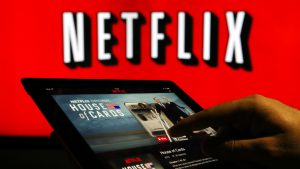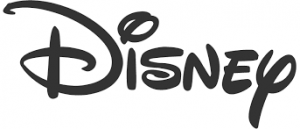‘Media disruption’ is a gentle description of the way that technology expands the choice for consumers and marketers so dramatically that it shatters long-established business models. Tech has given consumers the ability to decide what, when and how they want to read or view, and has given advertisers a huge range of new promotional options. The choice bomb has already wrecked the economics of many newspapers and magazines.
The drive for fresh business models is a challenge for all legacy operators because new media may accelerate the decline of existing profits. Established companies can’t defend and attack at the same time.
Broadcasters ‘in the money’
The dilemma frequently morphs into self-serving denial where operators of each media category, in turn, persuade themselves that existing operations can survive – with just a few tweaks. B2B magazines once believed they were protected by supposedly ‘need to know’ information, consumer magazines by iPad editions, book publishers by e-books, and newspapers by huge (non-paying) digital audiences. One by one, legendary media brands have shrunk. But the largest category of all, TV broadcasters, are still riding high. Their continuing financial success and large (if declining) audiences make them feel pretty smug.
They even wonder whether the runaway Netflix will be a long-term success. The video streamer is currently burning its way through $2bn of losses a year. But it has $11bn of revenue from 109.3m global subscribers

in 190 countries – 50% outside the US. The company, which began life in 1997 as a DVD-by-mail business, has added 4.5m subscribers in the past three months and is almost 50% up in the past year. This year, it’s tripled to 320 hours the original programming for which it is now best-known.
In the US, Netflix subscribers are ‘bingeing’ an average of more than two hours per day of high-quality drama productions funded by a $6bn content budget (second only to ESPN sports networks) and expected to reach $8bn next year. It only started making original programmes in 2013 with Kevin Spacey’s House of Cards. But its 2017 budget is said to be 18 times that of the most expensive movie ever made – and almost equivalent to the combined spending of all the major Hollywood studios.
The swelling budget has created a raft of popular series including House of Cards, Stranger Things, The Crown, Master of None, Death Note, Narcos, Designated Survivor, Orange is the New Black, and Mindhunter. Netflix already has some 200 original productions and this year won more Emmy award nominations (91) than any TV network except HBO. Five of the 10 most searched TV programmes in 2016 were made by Netflix. It is now working with Shonda Rhimes, the creator of Grey’s Anatomy and Scandal, and has also acquired the Millarworld company founded by comic book writer Mark Millar.
The declared aim is to collaborate with the “best creators” worldwide and to own the content so it can continue to offer it to subscribers on a global basis. Having built a reputation for what are effectively serialised movies, it is now pushing into full-length movies themselves. Next year, it will release no fewer than 80 films compared with just eight in the last three months. The company is also ramping up its productions in new languages including Italian and German. This approach to offering original content in a country’s native language has been key to its penetration in emerging markets like Brazil.
Tracking viewers
Make no mistake, Netflix is now a global television network, arguably the very first. It has changed viewing habits almost everywhere by delivering global programming on demand – and without advertising. It has accelerated the shift away from broadcasting systems built along national borders, time schedules, and commercials. Its algorithms know what viewers watch, learn what they like and push new shows and episodes accordingly. CEO Reed Hastings says that “one day we hope to get so good at suggestions that we’re able to show you exactly the right film or TV show for your mood when you turn on Netflix”.
Flat-footed TV broadcasters are slowly getting used to an unfamiliar world where they know little about the viewing figures of a key competitor because Netflix has no advertiser-need to boast about its audience. Although ‘linear’ TV audiences are falling steadily and the digital advertising opposition is cranking up, the real tipping

point in broadcast revenues may still be a few years away. But, as elsewhere in media, the yawning gap is among advertising-averse young people who stream video on mobile platforms. Studies show that many 18-24 year olds are spending up to 30% less time per week watching TV than they did just a few years ago. Even before you consider this effect on the networks, Netflix is currently way ahead of Amazon Prime on subscribers, active viewers and programme awards. It is also currently spending 50% more on original content than Amazon’s $4bn, though everybody expects Jeff Bezos to close this gap over the next 2-3 years. In the US, the 10-year-old Hulu (owned by arch-rivals Fox, Disney, NBC, and Time Warner) has fewer than 20m subscribers. But it’s a long game and Apple, Facebook and Google will be major players.
Netflix’s recent announcement of a $1 increase to $10.99 in its monthly US subscription may eventually add an estimated $600m a year to the production budget. The fact that the price is still 50% below some pay TV underlines the challenge for the multi-channel TV incumbents.
Some analysts estimate that Netflix could become profitable in 3-5 years, while still at a discount to cable and satellite TV. But that all depends on the programme budgets. The CEO is predictably optimistic: “We’ve taken the long-term view that we’re in the early stages of the worldwide, multi-decade transition from linear TV to internet entertainment. We have a good head-start but our job is to improve Netflix as rapidly as possible to please our members by earning their viewing time and to stay ahead of the competition in the decades to come.”
A measure of that ‘head-start’ is the seemingly unique loyalty of US Netflix subscribers, 80% of whom currently do not subscribe to any other video streaming service (source: Statista).
Among established cable TV operators, Time Warner’s HBO is showing that on-demand viewing is all about content. Its Game of Thrones is a driving force for the company’s own streaming app which was downloaded 500,000 times in the first week of season 7, translating into a massive increase in subscription revenue.
Netflix ‘more than online’
Broadcasters may still believe that they are not facing the same risk of dislocation as, say, print media. They may even believe that their ‘catch-up’ and ‘TV anywhere’ online services are some kind of match for Netflix. Major networks have their own video services on websites and apps for streaming devices like Roku, Google Chromecast, and Apple TV, and these networks could eventually stream their entire catalogues of shows. But Netflix is actually the antithesis of the TV networks and cable channels not just because it is online, but because it is:
- Funded solely by subscriptions and carries no advertising
- Dedicated increasingly to exclusive and original content to which it owns worldwide rights
- Marketed to global audiences
- Made for viewing on all platforms and devices
This new TV industry is “on-demand and born global”. Described as “Subscription Video on Demand” (SVoD), it gives users unlimited access to a wide range of increasingly-exclusive programmes for a single, monthly ‘all you can eat’ payment. Viewers can decide when to start the programme, and can pause, fast forward, rewind and stop the show as they like. They can also binge on whole series of Netflix originals.
Whatever the pace of switching among viewers, TV’s decline is due partly to SVoD being “better”. The often more expensive cable-satellite pay TV usually involves a contract of one year or more, where up to 30% of viewing time may be ads, and viewing is often punctuated by confusing rules about in-home and out-of-home content access. Some content can be watched on some screens and not on others, and there are strict geographical barriers.
If those obstacles were not enough, the (still) huge advertising budgets may mean TV executives have too much to lose if they get serious about SVoD. You can feel the frustration.
James Murdoch told The Information recently that 21st Century Fox (which knows more than most about global pay TV) is considering whether to sell programming through its various apps without a cable subscription in “the near future”. But the fact that he first said that a year ago implies that Fox too is torn by the same need to defend existing broadcast profits.
Murdoch has been keen to say that media companies have all the cash and expertise to beat back digital companies in the fight for audiences but time will tell if they really have the nerve to risk existing profits by competing globally with the likes of Netflix, Amazon and Apple. And the SVoD competition doesn’t stop at drama.
‘Netflix of non-fiction’
One man who is betting that the established TV players won’t be able to keep up with SVoD is John Hendricks who 32 years ago became a cable TV pioneer with his launch of Discovery Channel. He had been inspired by classic television documentaries such as Walter Cronkite’s The Twentieth Century and Carl Sagan’s Cosmos, and set out to create a 24-hour network of documentary, nature, and science programming.
He first founded the Cable Educational Network in 1982, two years after Ted Turner’s ground-breaking CNN. Hendricks

launched with a $100k second mortgage on his home and the tough early months of cable TV took him to the brink of bankruptcy. But, three years later, he jumped into the launch of Discovery Channel with $5m start-up capital led by investors including Allen & Company and the BBC. Over the past 30 years, Discovery Communications has become a $23bn media empire which now comprises 48 channels (including Animal Planet TLC and Discovery in various guises) across 220 territories with revenues of over US$6bn. This year, it paid $12bn for Scripps Networks, owner of the Food Network, HGTV, and the Travel Channel.
The founder himself had stepped down in 2014 after almost 30 years at the helm of Discovery Communications, which is now controlled by Liberty Global’s John Malone and Conde Nast’s Newhouse family. But Hendricks never planned to retire. Within a few months, he launched CuriosityStream as “the world’s first on-demand, ad-free content streaming service delivering premium factual content in the areas of science, technology, civilisation and the human spirit”. The compelling two-year-old streaming service is now available in 196 countries worldwide on multiple TV, desktop and mobile devices. It hosts some 1,700 titles providing deep dives into science, history, technology and nature, including exclusives by David Attenborough, Jason Silva, Edward Snowden, and Stephen Hawking. It is also exploiting the resurgent interest in space exploration and the proposed manned flights to Mars.
Hendricks describes his brilliant new channel as “the non-fiction Netflix” and identifies SVoD as the ‘third wave’ of TV, after the invention of free-

to-air broadcasting in the 1940s and multi-channel cable-satellite TV, pioneered by HBO in 1975, followed by CNN, and Discovery: “When I launched Discovery in 1985, it was clear multi-channel TV would sweep the planet and I see the same thing with CuriosityStream and streaming. That’s why we went into originals straight away. It gives us worldwide rights.”
Hendricks has not yet disclosed subscriber figures for the service which has grown largely through word-of-mouth – and a monthly price of as little as $2.99. But he says: “We are on track to meet a near-term goal of 1m subscribers, and we are confident that CuriosityStream will reach a long-term goal of achieving more than 30m subscribers by 2026. In 2026, we project that Netflix will have more than 120m global (non-US) subscribers and I expect that CuriosityStream will have reached about 25% of Netflix’s distribution base, reflecting the long-demonstrated consumer demand ratio, 1 to 4, between non-fiction and entertainment programming.”
In every way, it is just the start.
As if to emphasise the potential of non-fiction SVoD, a popular UK television host is next month launching his own HistoryHit TV streaming service. Dan Snow is a thirty-something Brit whose peak-time programmes have spawned a popular podcast History Hit all about his passion: “We need History more than ever to make sense of our changing world. But

we’ve got problems. Global TV corporations are slashing budgets for history shows, governments are cutting back on history education, and politicians are making it up to suit themselves. HistoryHit TV is a global video-on-demand history channel. It will be available on all of your devices, anywhere on the planet. Think of it like Netflix, but dedicated to world history. We’ll bring you the best collection of great history documentaries. We’ll also produce original seasons that will cover historical subjects in more depth than you’ve ever seen before.”
Interestingly, Snow’s SVoD channel is distinctly low-cost and under-pinned by a crowd-funded £150k. The subscription price will be £5.99 a month in the UK and $6.99 internationally. It will produce original series covering historical subjects and is in discussions with producers about new shows. It will also feature existing documentaries acquired from distributors. The company has pledged to donate 10% of its annual profits to education projects around the world. It seems to open up the possibility of many more specialist VSoD channels from small companies, sports clubs, professional associations, educational organisations and even charities.
Meanwhile, there are many new video streaming apps and channels all over the world and the global subscriber numbers show what’s coming. There were some 263m of SVoD subscribers in 2016 and this is expected to more than double to 546m within five years. The estimates cover 621 platforms in 138 countries which means SVoD revenues are expected to reach $41bn in 2022 (up from $17bn in 2016). And it is a truly global phenomenon, with AsiaPacific subscriptions expected to overtake North America next year and to account for 43% of all global SVoD subscribers by 2022.
Here comes Disney
Traditional broadcasters can’t help but feel the heat. Many have streaming services. But how many will have the nerve of US giant Disney (powerful owner of the eponymous studios and also ABC, ESPN, and Pixar) which recently announced 2018-19 plans for full-scale SVoD with exclusive programming. It’s launching streaming services on sports (through ESPN) and its own movies (including some of those recently cut-off from Netflix). It’s two years since Disney started to experiment with streaming in the UK. But the lessons of its ho-hum DisneyLife app are that such subscription services must have new or exclusive content. Netflix could have told them.
Disney’s decision to withdraw its content from Netflix (which had reportedly been paying it some $300m a year in licence fees) marks a watershed in SVoD. Netflix’s early streaming success had clearly come partly from Disney’s popular children’s offerings and

Disney-Pixar films. It was giving Disney a revenue stream to complement the company’s own cable channels and movies. But now Netflix has become a direct competitor by spending heavily on its own programmes, including in the children’s market where it has a new animated series based on Dr Seuss’s “Green Eggs and Ham.” It also has a deal with DreamWorks Animation for 300 hours of new children’s programming. Netflix has further riled Disney by signing Shonda Rhimes from ABC.
Disney will, therefore, become a mainstream competitor with Netflix, Amazon, Facebook, and Apple, although its new SVoD channels may not be fully operational for almost two years. By then, Netflix may have 140m subscriber homes. It is estimated that Disney will have to get some 32m subscribers just to compensate for the loss of its licensing revenues from Netflix.
Whether or not Netflix can maintain its own financial high-wire act without succumbing to ‘merger’ with a traditional TV player, telco or digital group, it is clear that SVoD is rapidly changing the market.
One US investment analyst said recently: “Free and pay-TV operators (including Telco/Cable) underestimate the power of the Netflix and Amazon models (scale in content, cheaper distribution and operating costs, customer satisfaction due to the lack of advertising, and speed at which the ‘originals’ catalogue is being built). We believe that broadcasting profits… will be under tremendous pressure in the next five years as alternative OTT (online) offerings draw audiences away… reducing incumbent broadcasters’ ability to invest in content and retain audiences.”
Inevitable winners?
Streaming services are only just beginning their assault. SVoD will enable many more paid-for channels including for individual sports, movie genres, documentaries, business, and even news and current affairs.
The relatively low-cost of some launches means that broadcasters will find themselves competing with an increasing number of specialist streamers. If they can somehow navigate the shift across to broadband, some networks will be able to sustain advertising based on their ‘new’ opportunities with data and e-commerce. But, in a broadcasting world dominated by online, the large-scale winners will inevitably include Facebook, Apple, Amazon and Google, and perhaps even some major news brands. Although it seems more likely to be streamed free, BuzzFeed is clearly pushing toward what we might call ‘online TV’ channels with a new UK food series “Worth It” airing weekly on Facebook and YouTube from November. It’s a follow-on from a US version which has scooped hundreds of millions of views and is planned to go global. There obviously will be plenty more online viewing from all kinds of digital players to tempt viewers away from the broadcast networks.
It’s a vision to chill the spine of TV broadcasters everywhere but – like the disrupted print publishers before them – they may still believe they can adapt to a world where almost everything is different. Let’s watch.
Sign up to receive Flashes & Flames in your inbox
Have a look
Sorry, this feed is currently unavailable or does not exist anymore.




